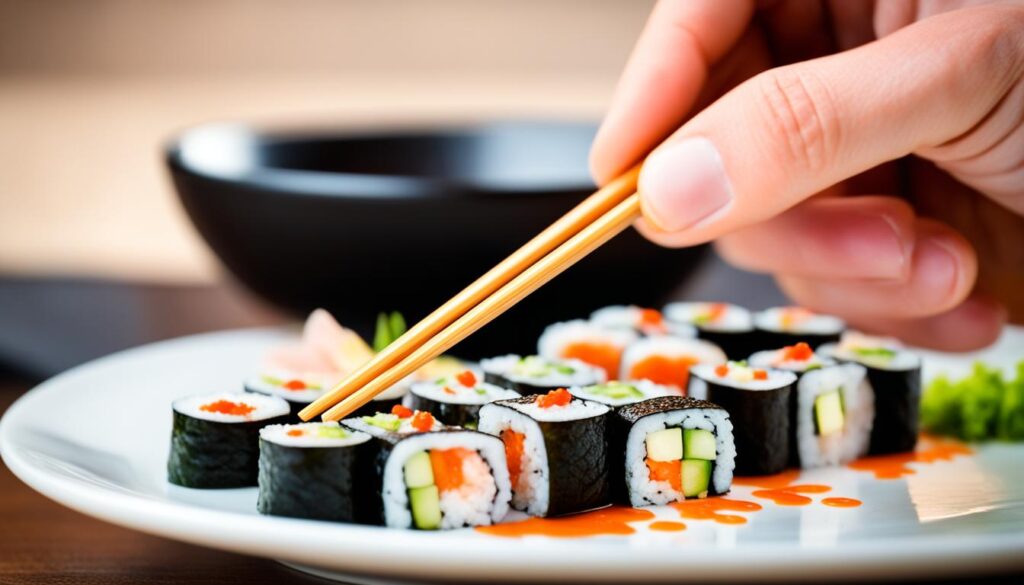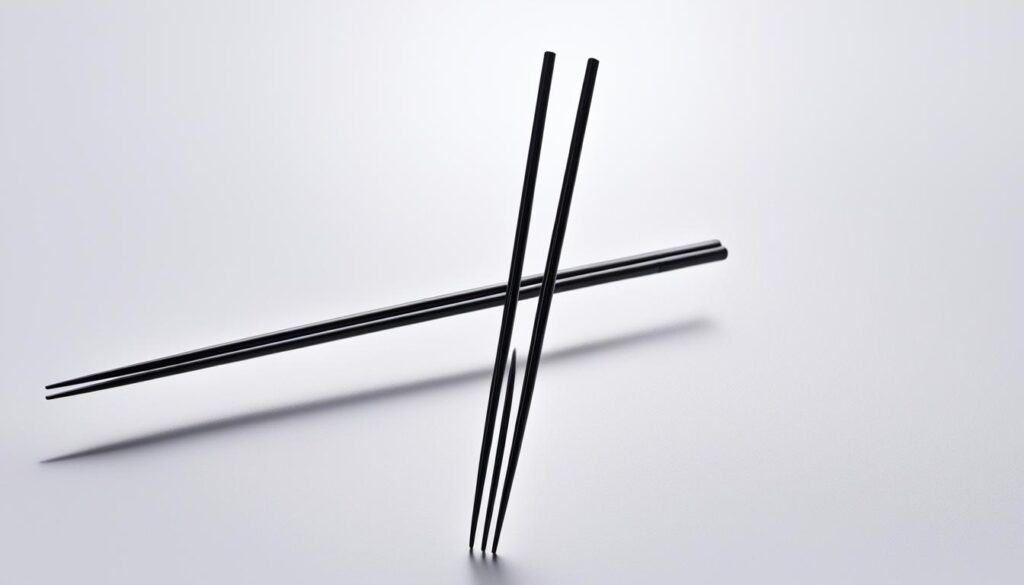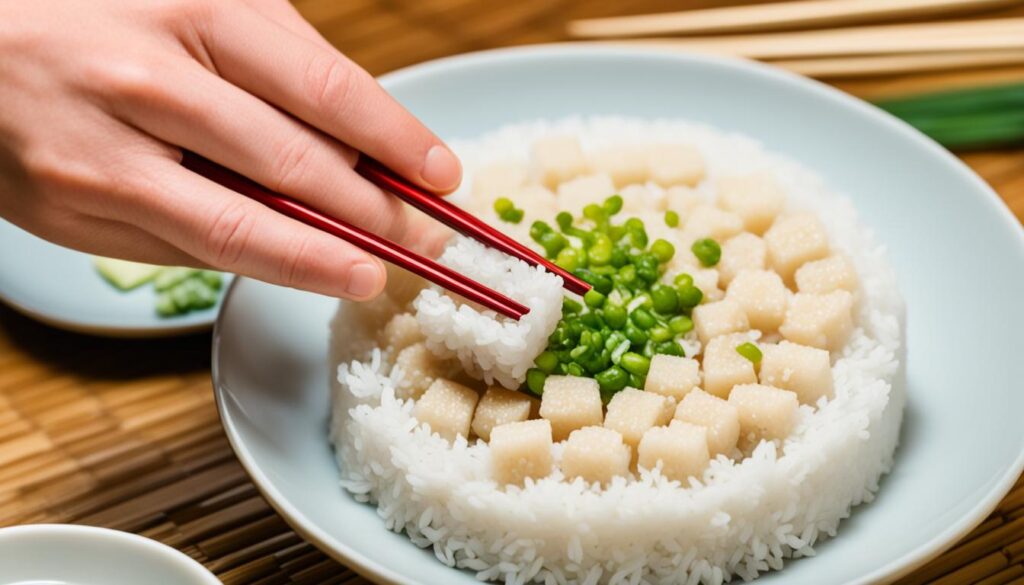Are you tired of fumbling with chopsticks while trying to enjoy your favorite sushi or noodles? Do you wish you could effortlessly wield those sleek wooden utensils with finesse and grace like the locals? Look no further! In this comprehensive guide, we will equip you with easy tips and tricks to master the art of using chopsticks. Whether you’re a beginner or looking to refine your technique, we’ve got you covered. Get ready to elevate your dining experience and embrace the elegance of chopstick culture.
Using chopsticks correctly is not only practical but also a way to show respect for the rich traditions associated with Asian cuisine. From the proper way to hold chopsticks to advanced techniques for various foods, we’ll cover everything you need to know. You’ll also discover the top chopsticks for beginners that will help you build confidence and improve your skills. And let’s not forget about the intricate world of chopstick etiquette, where small gestures can make a big impact.
So, are you ready to take your chopstick prowess to new heights? Let’s dive in and unlock the secrets to using chopsticks like a pro!
Key Takeaways:
- Discover easy tips and tricks to become proficient in using chopsticks.
- Master the basics, including the proper way to hold chopsticks.
- Explore advanced techniques for handling diverse foods.
- Find the best chopsticks for beginners to kickstart your journey.
- Learn chopstick etiquette for graceful and culturally aware dining.
Tips on Using Chopsticks: Mastering the Basics
Properly holding chopsticks is the first step towards using them effectively. Mastering the basics will give you the foundation you need to become a chopstick pro. Let’s delve into the step-by-step instructions on how to hold chopsticks correctly.
First, place one chopstick between your thumb and index finger. Position it slightly above the middle of your fingertip, allowing for flexibility and movement. Treat it like you would hold a pen or pencil.
Next, position the other chopstick between your index and middle fingers. Unlike the first chopstick, this one should rest on the lower part of your fingertip, closer to the finger joint.
Now, align the tips of both chopsticks. Keep them parallel and facing forward, ensuring they are equidistant from each other.
Avoid gripping the chopsticks too tightly, as it can hinder dexterity and control. Instead, maintain a relaxed grip that allows for smooth movement.
One common mistake is holding chopsticks too close to the tips, making it difficult to grasp food. To improve your grip and control, try holding the chopsticks slightly closer to the middle. This will give you better leverage and precision.
With practice and patience, you’ll develop muscle memory and achieve a comfortable hold that suits your hand shape and size.
By mastering the basics of holding chopsticks correctly, you’re now equipped with the essential skills needed to use chopsticks effectively. Ready to move on to advanced techniques? Let’s find out more in the next section.
Advanced Chopsticks Technique for Diverse Foods
Now that you have mastered the basics of using chopsticks, it’s time to level up your chopstick skills. In this section, we will explore advanced techniques that will enable you to handle different types of food with ease and finesse. Whether you are indulging in noodles, sushi, or rice, these techniques will ensure you make the most out of your chopsticks.

Using chopsticks for different types of food requires a specific approach. Let’s start with noodles. To skillfully pick up noodles, it is best to use the “pinch and pull” technique. Place one chopstick above the noodles and another below them, then gently squeeze and pull the chopsticks apart, gripping the noodles securely. This method allows you to enjoy every strand without slippage or splattering.
When it comes to sushi, precision is key. Use a gentle yet firm grip to pick up the sushi roll from the plate. To avoid any mishaps, it’s always a good idea to dip the fish side of the sushi into soy sauce, ensuring the rice remains intact. With practice, you’ll be able to savor sushi like a seasoned chopstick connoisseur.
Rice, known for its sticky texture, can be a bit tricky to handle with chopsticks. The key here is to keep a steady hold, using your chopsticks to scoop and grab small portions rather than attempting to pick up large clumps of rice. This technique will prevent rice from falling back onto your plate instead of making its way to your mouth.
Remember, practice makes perfect. Embrace these advanced chopstick techniques and continue to refine your skills. Soon enough, you’ll be impressing your friends and family with your ability to handle any dish gracefully using chopsticks.
Top 5 Best Chopsticks for Beginners
Choosing the right chopsticks is essential for beginners. To help you on your chopstick journey, we have carefully curated a list of the top five best chopsticks for beginners. These beginner-friendly chopsticks are designed to make mastering chopstick usage easier and more enjoyable. Let’s take a closer look at our recommendations and why they are perfect for new users:
1. Wooden Chopsticks: Traditional and elegant, wooden chopsticks offer a classic experience. They are lightweight, easy to grip, and provide a natural texture that enhances your dining experience. Wooden chopsticks are perfect for beginners looking for an authentic and genuine feel.
2. Training Chopsticks: If you’re just starting out and need some extra help, training chopsticks are an excellent choice. These chopsticks often feature a hinge or special design that helps new users improve their grip and control. With practice, you’ll quickly develop the skills needed to use regular chopsticks confidently.

3. Reusable Chopsticks: For those conscious of sustainability, reusable chopsticks are an ideal option. Made from durable materials such as stainless steel or bamboo, these chopsticks can be used over and over again. They are beginner-friendly, environmentally friendly, and often come in stylish designs.
4. Silicone Tipped Chopsticks: If you’re afraid of damaging delicate cookware or are concerned about using wooden chopsticks with non-stick pans, silicone tipped chopsticks are a great alternative. The soft silicone tips provide a gentle and non-slip grip, making them perfect for beginners who may be worried about dropping or scratching their pots and pans.
5. Metal Chopsticks: Metal chopsticks, such as those made from stainless steel or titanium, offer durability and longevity. With their sleek and modern design, they are both functional and stylish. Metal chopsticks are perfect for beginners who prefer a more contemporary and sophisticated look.
By selecting one of these recommended chopsticks for new users, you can start your chopstick journey with confidence. Whether you choose traditional wooden chopsticks, easy-to-grip training chopsticks, environmentally friendly reusable chopsticks, gentle silicone tipped chopsticks, or modern metal chopsticks, you’ll find the perfect option for your needs. Embrace the joy of using chopsticks and elevate your dining experience!
Navigating Chopsticks Etiquette for Graceful Dining
Understanding chopsticks etiquette is crucial to demonstrate respect and cultural awareness during dining experiences. It is important to familiarize yourself with various cultural customs and taboos associated with chopsticks to avoid any unintentional missteps and ensure a graceful dining experience.
One essential rule of proper chopsticks usage is to never stick your chopsticks upright in your food. This is considered impolite and reminiscent of a funeral ritual in many Asian cultures. Instead, lay your chopsticks flat on the chopstick rest or another clean surface when not in use.
Another aspect of chopsticks etiquette is when passing food from one person to another using chopsticks. It is considered more hygienic to use the serving utensils provided, rather than transferring food directly with your own chopsticks. This practice helps to prevent cross-contamination and shows consideration towards others.
Furthermore, it is important to avoid using chopsticks for actions other than picking up food. For example, refrain from using chopsticks to drum on the table or point at someone. Resting your chopsticks on your bowl or plate is also considered improper chopstick etiquette. Instead, make use of the chopstick rest or the wrapper they came in.
By adhering to proper chopsticks usage and respecting cultural customs, you can ensure a more authentic and enjoyable dining experience. Embrace the traditions and elegance associated with chopsticks and savor the flavors of Asian cuisine with grace and sophistication.
Conclusion
Mastering the art of using chopsticks is a valuable skill that opens the door to fully immersing yourself in Asian culinary traditions. By following our easy tips and tricks, practicing different techniques, and understanding chopstick etiquette, you’ll become a proficient chopstick user.
Embrace the culture and elegance of using chopsticks, and savor the authentic dining experience it brings. With dedication and practice, you’ll soon be using chopsticks with finesse and confidence. Say goodbye to forks and knives, and let your chopstick skills shine!
So, whether you’re enjoying a plate of sushi, slurping up noodles, or savoring a bowl of steaming rice, let your mastery of chopsticks take center stage. Mastering chopsticks not only enhances your dining experience, but it also showcases your appreciation for Asian cuisine and its rich cultural heritage.
By perfecting your chopstick skills, you’re not just wielding a utensil; you’re mastering an art form. So don’t be afraid to delve into the world of chopsticks and explore the endless possibilities that await. Bon appétit and happy chopstick adventures!

